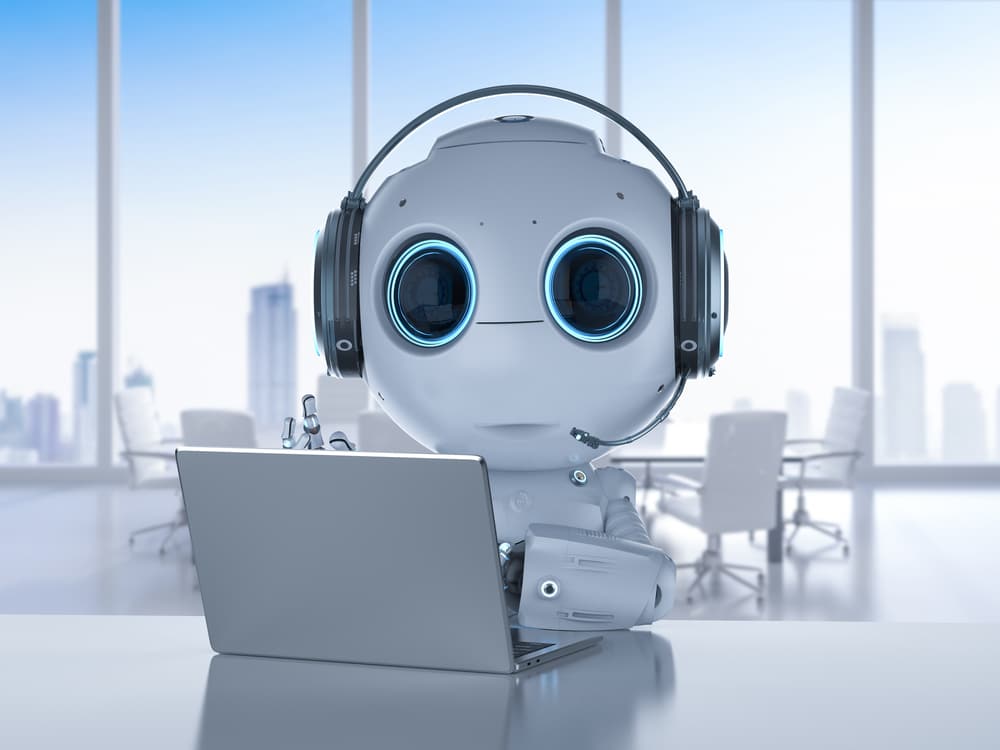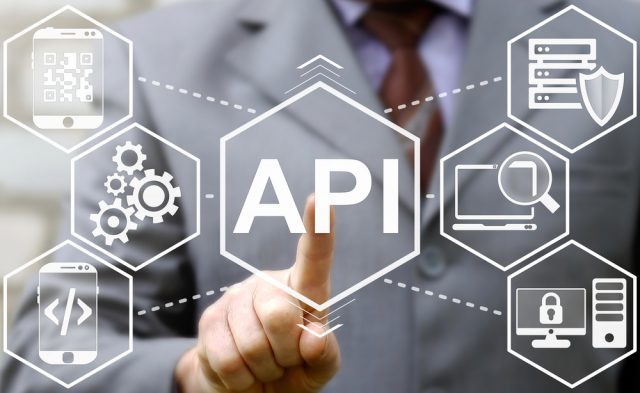
Battle tested: Continuous testing helps chatbots thrive
If you’ve been interacting with your favorite brands lately, you’ve likely noticed that chatbots seem to be everywhere. We are a society obsessed with instant gratification. We want answers immediately and often that means rolling the dice on using a chatbot to see how close they can get to what we are looking for. As the use of chatbots expands, so can the number of chatbot failures each day. At the same time, customers’ expectations of what a 'good' chatbot experience is has never been higher. And not meeting these stringent expectations means disappointing the customer, which can also result in loss of business, or worse, damage to your brand.
No matter what industry a chatbot operates in, connecting and communicating with people is its primary function. The formula for success for chatbots is the same as it is for traditional customer service channels: quick and effective service. Even though conversational AI has made great technological strides, the user experience is still lacking, especially when it comes to handling natural language processing (NLP), latency, data security, and other issues.

Debugging the monolith: How to change the thinking of an entire tech company
In recent history the tech industry has been impervious to market forces that have crippled adjacent sectors, predominantly because of the public’s insatiable demand for digitization.
However, over the course of the past year vulnerabilities have begun to emerge, with the economic climate growing so harsh that even the mightiest tech giants have faltered. Tech industry investment was down 40 percent in Q3 2022 compared to the same quarter in 2022, while market leaders such as Meta, Amazon and Twitter have all cut jobs to manage costs.

Redefining the 'metaverse' -- how to determine real utility in the Web3 world
It’s time to redefine what has come to be known as the metaverse -- a reimagined internet, integrating both established and new technologies (think mixed reality) -- to Web3. Though possibilities appear to be plentiful, the 'digital reality' perception of the metaverse is too far off in the horizon and not currently widely relevant.
Rather than focusing on the metaverse, then, businesses need to consider the real-life use-cases for Web3 -- including decentralization, blockchain, and token-based economics -- including crypto and non-fungible tokens (NFTs), to gauge their true value, sustainability, and future. Web3 has given us an incredible tool -- the ability to create a 'digital value economy', whereby something can have value in and of itself online, without a trusted intermediary.

Data Privacy Day: Don’t put all your eggs in one basket
Privacy Day is of extra importance this year because of a dramatic increase in attacks designed to get around measures that make account log-ins more secure, and therefore protect our privacy.
For example, in mid-September, Uber reported a network breach that led to shutting down some of its internal communications and locking its codebase to prevent any new code changes. The attacker reportedly targeted a contractor by repeatedly sending multi-factor authentication login messages until the contractor accepted and gave the attacker access, according to Uber. Several days later, video game maker Rockstar Games announced it also had suffered a network intrusion from an unauthorised third party. The company says the attacker was able to gain confidential information, including early development footage for its upcoming and much anticipated game, Grand Theft Auto VI.

Ransomware affects every aspect of your organization -- here's how to keep your business-critical applications safe
Cybersecurity continues to be an increasingly complex landscape for businesses to navigate as cybercriminals become more sophisticated and the frequency of attempted attacks grows at a rapid pace. One of the biggest cybersecurity challenges that businesses have to contend with today is ransomware, which has become the biggest global cyber threat as attacks strike fast and can do massive damage.
We particularly saw the rapid rise of the ransomware threat during the period of the Covid-19 pandemic, a time when most organizations and industries were increasingly adopting new technologies to help adapt to a new, remote environment characterized by digital transformation. According to the latest ransomware statistics, more than a third of organizations across the globe suffered an attempted ransomware attack in 2021, an increase of 105 percent -- to 623.3 million ransomware attacks -- compared to 2020. And, while the volume of ransomware attacks fell by 23 percent in 2022, as organizations began to more aggressively respond to cyber threats, attack methods are continuously evolving at the same time that average ransomware demands are dramatically increasing.

Insider threats: The cyber risks lurking in the dark
More and more IT professionals are dealing with a growing issue that is lurking within their own organizations. With recent high-profile data breach stories hitting the headlines, the risk posed by insider threats has become a matter of utmost concern for IT teams, with such incidents rising 44 percent over the past two years according to the 2022 Ponemon Cost of Insider Threats Global Report.
While insider threats are perceived by the general public as disgruntled employees actively sabotaging systems or stealing data to sell to competitors, the problem is much more complex than that. Due to the rising cost of living world-wide, more employees will become susceptible to the requests of malicious actors looking for potential accomplices for deploying ransomware. In addition, misusing insider access is not only limited to unleashing ransomware, as users may feel incentivized to also sell their credentials in a bid to make easy money. These risks raise huge concerns for any organization, as user privileges can be easily taken advantage of and escalated to take over critical IT resources. In fact, our own Quest security assessments found out that a significant portion of user accounts -- an impressive 70–100 percent -- have access rights that can be easily escalated by hackers to gain access to Tier Zero assets, including the Active Directory domain.

Improving the hybrid meeting experience
Whether you are in the office full-time, part-time or completely remote, hybrid meetings have become a convenient and necessary way for employees who split their time between different locations to remain productive. The ability to work from home has become the ability to work from anywhere. Meetings and activities are moving to collaboration platforms as hybrid working has become the standard. Regardless of how many people are in the room or joining remotely, it’s important that everyone has a good experience. Flexible working will soon be the default for millions of workers, under new UK government plans that will allow people to request it from day one of their employment.
As hybrid work evolves, video meetings and content sharing will continue to be an essential point of contact between colleagues, partners, and clients. To deliver effective and collaborative communications, organizations will need to ensure that they have a strong foundation in place and adopt the necessary technologies to support their employees and this way of working. Here we’ll cover the tools and technologies that users will need to interact with on a daily basis and the key IT infrastructure considerations for organizations.

'Data-fication' set to drive transformation in transport and logistics in 2023
As we look ahead to this year, it is from the position of continuous volatility that the past twelve months have brought. Transport and logistics companies, still in COVID recovery mode, face a raft of challenges as external factors combine to ensure that the road before us is anything but smooth. Both industries are experiencing a heady combination of disruption and transformation, with exciting innovations starting to deliver on their potential.
We are already seeing the incredible potential of data-focused digital transformation to revolutionize how transport and logistics companies operate. Successful ‘data-fication’ will enable companies to absorb some of the shockwaves of ongoing disruption set to trouble the sector in the coming year and enable them to start to achieve the potential that digital transformation can bring.

Keep the faith with fax
It’s easy to assume that faxing has no place in today’s digitalized workplace. When email and Instant Messaging apps are so established and familiar, the idea of typing in a fax number, feeding a document into a machine, and then having to wait beside that machine to print out a response for you, sounds, at best, quaint: and at worse, slow, inefficient and unsecure.
But fax has evolved and continues to underpin vital operational processes across a range of sectors. The ongoing importance of timestamping plus the advent of cloud in particular means that whether it’s finance: exchanging the details for buying a house: or sending and receiving critical and confidential healthcare documents, fax still has a significant contribution to make in the day-to-day running of an organization.

How does SASE simplify and strengthen cloud security?
A new data breach is revealed to the public every day. Some of the most recent ones that included large businesses are Mailchimp, LastPass, and T-Mobile. One of the many reasons we increasingly read about such incidents is because it’s getting more and more challenging to protect the assets of a business. The truth is cyber criminals are getting savvier by the day, and their attack methods, such as malware, more sophisticated.
Organizations face a multitude of hacking threats that target their increasingly complex infrastructures. To fight it, businesses deploy Secure Access Service Edge (SASE) to both improve and simplify their cybersecurity. How does SASE aid modern companies to protect data and people from malicious hacking? Here, we discuss the key capabilities of the tool and how it can aid in the prevention of high-profile breaches such as Mailchimp, LastPass, and T-Mobile.

Taking control of the scary things: churn, incidents and downtime
Three little words herald major impact (and fear) for organizations: churn, incident, and downtime. Given that Gartner reports companies might be at risk of losing up to half a million USD each hour from severe incidents (based on losses and time to remediate), boards should take the health of a company’s digital operations seriously. Thankfully, those responsible for digital operations and incident response have a plethora of capabilities and services at their disposal that can drastically reduce the impact downtime and instability has on their organization.
With a long recession forecast for the UK, leveraging these tools to better understand, plan, and predict is crucial. Achieving this state of operational maturity means businesses are equipped with the right analytics, communications, understanding, and ability to take action to manage all threats and incidents -- and try to prevent as many as possible from occurring in the first place. True operational maturity goes beyond the technology in place to also cover the people and processes involved. These ‘human’ elements are no less vital since they are associated with important metrics and outcomes such as hours worked, staff burnout, and attrition.

Every business must act like a tech business -- and it will start with modernization
It wasn’t all that long ago that we spoke about digital transformation as a nice to have, but the pandemic created an urgency for it that never previously existed. Today, digital is paramount to business success and table stakes for any successful enterprise.
While many eye emerging automation and cloud technologies as the quickest way to create the digital environments that delight customers and employees, the reality remains that the majority of the world’s IT workload runs on traditional technology companies have been using for decades, like mainframe, on-premise and traditional data centers. And while that technology has served businesses well -- and can continue to do so -- consumer expectations, security concerns and data volumes are only increasing.

It's time to consider the business impact of APIs
APIs need to be discussed in terms of business impact. For too long, the API (application programming interface) has been considered a pure technology topic. But with the need to digitize core business operations and deal with rising security threats, business and technology leaders must elevate API strategic discussions. Meanwhile, organizations need to end the hotchpotch of APIs that act as point solutions and adopt a modern integrated platform approach to APIs that will deliver business optimization and improve the customer experience.
It is essential to look at the effect of APIs on the business, particularly as organizations deal with the three big impacts of war, recession, and inflation, which are putting pressure on all types of business. Moreover, APIs are a central pillar of three trends: digital transformation, improving data access and sharing and enhancing the customer experience, which were identified in a study we recently commissioned with research firm Vanson Bourne.

The Holy Trinity: Three trends that will take organizations to the next level in 2023
The organizations of today are facing one crisis after another. Whether it’s geopolitical tension or rising inflation, they are being forced to adapt. Faced with squeezed budgets and dwindling resources, these macroeconomic headwinds are causing business leaders to make smarter investments than ever before.
This is causing many enterprises to reassess their strategies and invest more resources in digital transformation, as they seek the ability to do more with less. As this continues to gather pace, we’ll see three key trends emerging, to form a holy trinity of success that will define digital transformation in 2023.

4 action items for CIOs in 2023
A CIO's job is to transform the business with technology. That becomes more challenging as the C-Suite tightens the budget with talks of a possible recession in 2023. Add a lack of IT talent and the inability to get the people that you need, and all of the sudden 2023 looks like quite the bootstrapped year. For CIOs, this means it's crucial that we are super-efficient and find innovative ways to save.
So, how do you get efficiency in a market where there's a talent shortage and budgetary restraints, but you still need to get your stuff done? The answers are most likely in adopting cloud managed services, leaning into partner options, AI ops, and automation.

